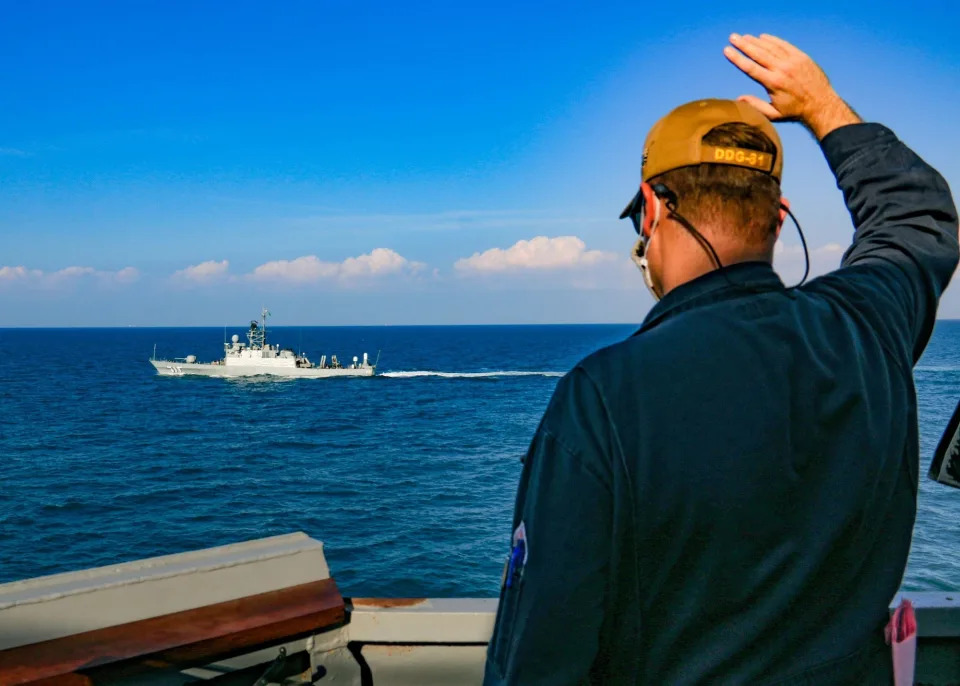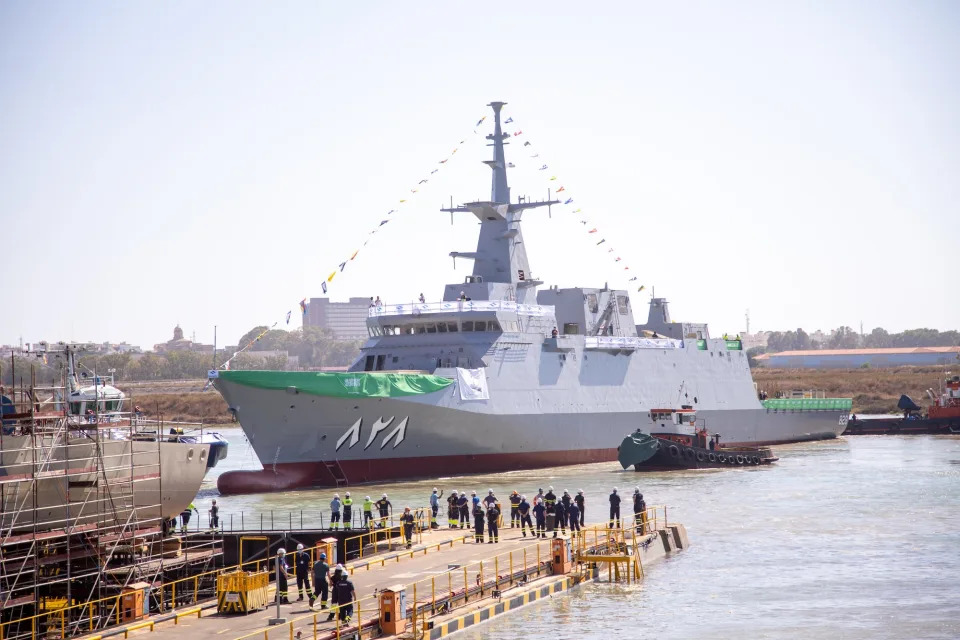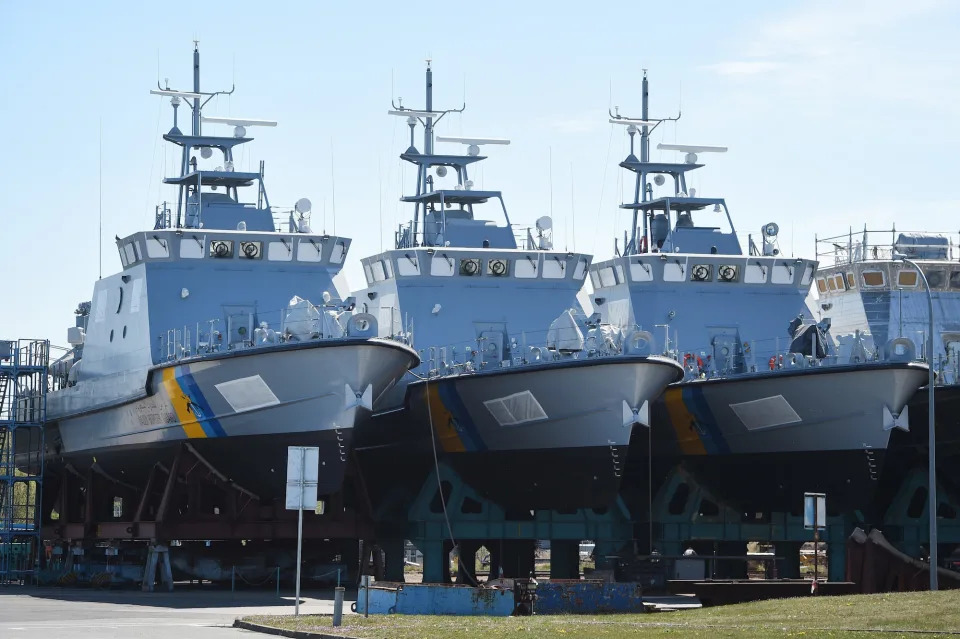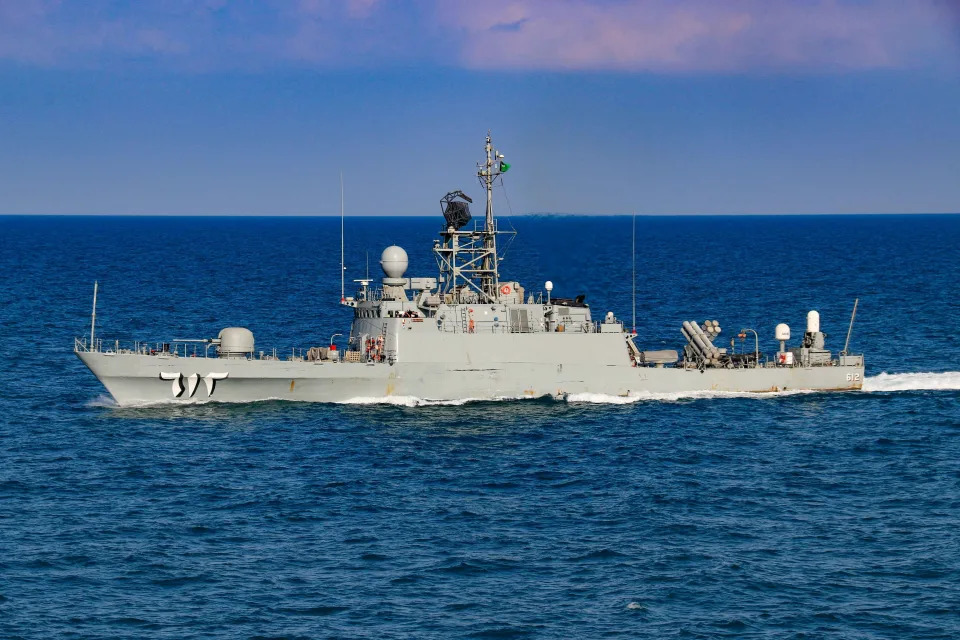After years of building up its navy, Saudi Arabia is testing its new warships with real-world missions

-
Saudi Arabia has invested heavily in its navy in recent years, buying a number of new warships.
-
Riyadh has also demonstrated more willingness to participate in and even lead maritime task forces.
-
The moves are a response to growing threats and reflect a desire to rely less on the US for defense.
Saudi Arabia's naval forces have come a long way in recent years, with Riyadh acquiring more advanced warships and demonstrating an increasing willingness to participate in and even lead maritime task forces in the Persian Gulf.
That change reflects Saudi investment in its own military in response to a growing array of threats in the region, as well as Riyadh's desire to reduce its dependence on the US to defend Saudi territory and interests.
The Royal Saudi Naval Forces made a departure from their "decades-long reputation as a reluctant naval power" by taking command of two naval task forces in the region — belonging to the Combined Maritime Forces and International Maritime Security Construct, respectively — in late August, which showed "a significant turnaround" in Riyadh's "maritime thinking," Leonardo Jacopo Maria Mazzucco, an analyst at Gulf State Analytics, wrote for the Stimson Center in October.

The kingdom has long relied on US protection and military support, as the Saudi military has primarily focused on countering air and land threats and lacks well-trained personnel.
But as the asymmetric threats facing Saudi Arabia from rivals such as Iran and the Houthi rebels in Yemen have proliferated, Riyadh has proved increasingly willing to reduce its dependency on Washington as a guarantor of its security.
Mazzucco said Saudi Arabia was taking tangible steps to modernize its fleet and demonstrate its capabilities to use its new warships in "real-world scenarios," which included "scaling up its contributions to US-led maritime security coalitions" and taking on a "more prominent role" in protecting sea routes along its lengthy coasts.
In recent years, the Saudi navy primarily consisted of Al-Madinah and Al-Riyadh-class frigates supplemented by Badr-class corvettes and Al-Siddiq-class patrol vessels, many commissioned in the 1980s.

Riyadh is modernizing that fleet with five new Avante 2200-class corvettes, ordered from Spain in 2018 under a contract valued at $1.79 billion. These warships come equipped with torpedoes, Harpoon anti-ship missiles, RIM-162 air-defense missiles, and a 76mm gun capable of engaging air and surface targets.
The first of the Spanish-built corvettes, Al Jubail, arrived at the Saudi naval base in Jeddah in August 2022. Riyadh expects to receive all five vessels by 2024. They're set to join the Saudi Western Fleet, responsible for protecting Saudi Arabia's vast Red Sea coastline, where the Yemen-based Houthis have repeatedly threatened international shipping and foreign warships.
The Western Fleet isn't the only Saudi naval force receiving shiny new warships. The Saudi Eastern Fleet expects to begin receiving the four Multi-Mission Surface Combatant ships it ordered as part of a $1.96 billion contract awarded to Lockheed Martin in 2019.
The MMSC vessels are based on the Freedom-class littoral combat ship and will be the most sophisticated vessels in the Eastern Fleet when they enter service in the second half of this decade.

Procuring such warships and taking the lead in multilateral naval task forces demonstrates Riyadh's commitment to remain a formidable naval power in the region.
In the 1970s, the Nixon administration outsourced security in the Persian Gulf to Iran under the last Shah, who built the most powerful naval force in the region and dominated that small but strategically important body of water, mainly with frigates acquired from the UK. Before his regime fell in 1979, the Shah envisioned Iranian warships patrolling along East Africa and, ultimately, the Indian Ocean.
Iran's naval power was greatly diminished during the Iran-Iraq War in the 1980s. During that decade, Saudi Arabia initiated the first Saudi Naval Enhancement Program, which equipped its navy with modern American, French, and British warships.
The current buildup, named Saudi Naval Enhancement Program II, or SNEP II, is the most significant one since then.

On the other side of the Gulf, Iran is investing more in its powerful Islamic Revolutionary Guard Corps paramilitary force than in its regular armed forces.
Unlike Iran's conventional navy, which has a standard fleet of frigates and corvettes, the IRGC Navy uses speed boats and primarily trains for hit-and-run operations against bigger, better-equipped adversaries.
Saudi Arabia's gradual expansion and modernization of its naval forces under SNEP II is meant to improve its ability to monitor and patrol the waters around and defend against possible attacks by Iran or its proxies.
The buildup doesn't mean Saudi Arabia expects or seeks war with Iran or is looking to win an arms race and displace Iranian naval power. What Riyadh's investments and increasingly active role in the region indicate is a desire to be equipped and prepared to respond to crises, threats, or conflicts without having to wait for the American cavalry to come to its rescue.
- Questions and Answers
- Opinion
- Story/Motivational/Inspiring
- Technology
- Art
- Causes
- Crafts
- Dance
- Drinks
- Film/Movie
- Fitness
- Food
- Jogos
- Gardening
- Health
- Início
- Literature
- Music
- Networking
- Outro
- Party
- Religion
- Shopping
- Sports
- Theater
- Wellness
- News
- Culture
- War machines and policy

